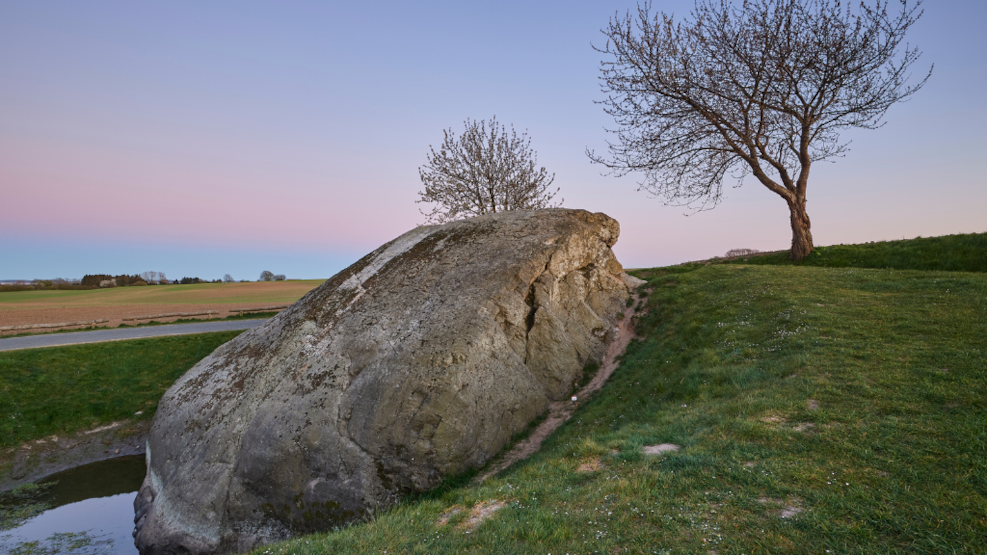
Damestenen
Visit the Lady Stone
The Lady Stone is located just north of the small town of Hesselager, as it has been for approximately 18,000 years. It is Denmark's largest stone on land. Once part of the bedrock in what we now call Sweden, the stone was freed during the last ice age as the inland ice ripped it away. A glacier transported this colossal stone from Sweden to its current location. During the journey, it was polished and rounded. At Hesselager, the giant stone struck the ground and froze in place as the glacier continued over it. Large amounts of ice moved across, smoothing the southeast-facing side and creating striations that reveal the ice's movement from southeast to northwest.
There is public access to the impressive stone and an adjacent parking area. Picnic tables and benches are available, allowing visitors to enjoy a meal while taking in the sight of the stone or to take a brief rest in the outdoors.
Geological Perspectives on the Lady Stone
The Lady Stone is often described as a light reddish-gray, medium-grained granite. However, significant portions of the stone appear to consist of striped areas with folds, suggesting that the stone material was subjected to such high pressure and temperature at some point that it became malleable, allowing minerals to arrange themselves into light and dark bands. This type of stone is called gneiss.
Millions of years of weathering of the bedrock and crustal movements brought the granite/gneiss to the surface. Here, the Lady Stone was freed from the bedrock by the glaciers of the ice age and transported from Sweden to Denmark. During transportation, the stone was rounded, polished, and abraded before being pressed into the moraine clay under the glacier and freezing in place at Hesselager.
The Lady Stone is part of the South Funen Archipelago Geopark
In 2018, Svendborg, Faaborg-Midtfyn, Langeland, and Ærø decided to establish the South Funen Archipelago Geopark with the aim of being designated a UNESCO Global Geopark. The purpose of the geopark is to create and preserve an area that accommodates both people and nature.
A UNESCO Global Geopark aims to showcase the geology, nature, and cultural history of an area, conveying the message that humans are part of life on Earth. It emphasizes our dependence on Earth's resources, the impact of climate change, and the responsibility for sustainable development.
The South Funen Archipelago Geopark tells the story of a dramatic sea level rise in South Funen and the islands. This rise shaped a unique nature that, over the last 10,000 years, has laid the foundation for the area's existence and cultural identity. It narrates how the landscape and archipelago continue to change, defining how we live today. The South Funen Archipelago Geopark is, above all, about understanding how through sustainable development, we can continue to protect our unique geological, biological, and cultural heritage.